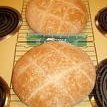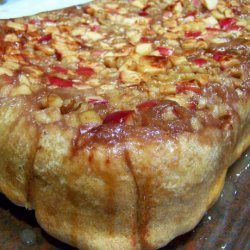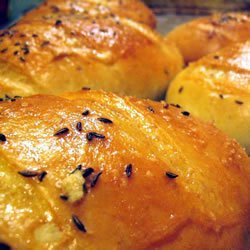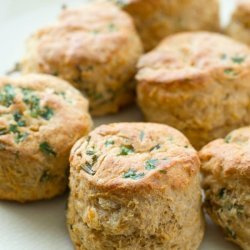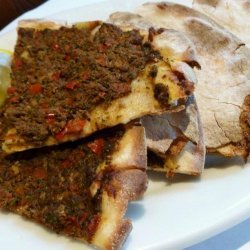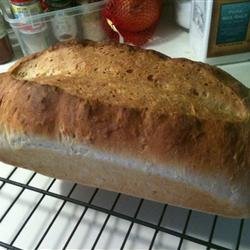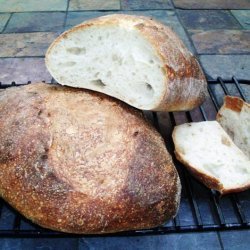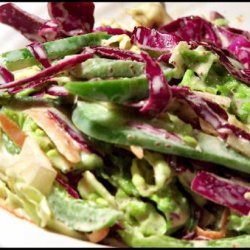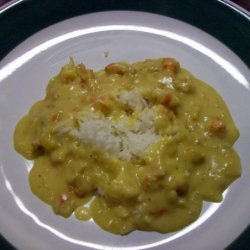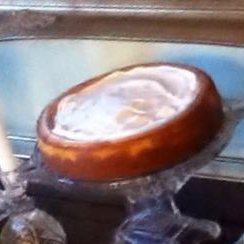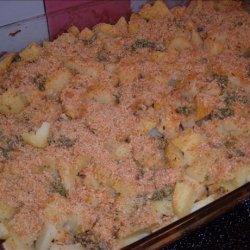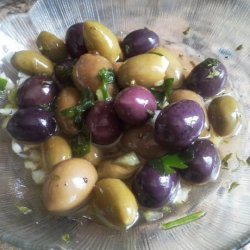Directions:
- In an electric mixer with the dough hook, combine the flour, starter and salt, and knead until it no longer sticks to the sides or bottom of the mixing bowl.
- Place a lightly oiled bowl, turning to coat. Cover with plastic wrap and let dough rise in a warm, draft-free place until doubled in size, 1 to 1 1/2 hours. Turn out onto a lightly floured surface. Sprinkle lightly with flour and knead gently, removing any large air bubbles. Knead into a small circle, then shape into a tight ball, pinching the seams together underneath. Place on a well-floured board or baking peel, seam-side down. Cover with a kitchen towels and let rest until doubled in size, about 1 hour.
- Preheat a baking stone, if available, on the bottom rack of an oven at 400 degrees F. With a sharp, serrated knife, cut a large X or cross-hatch pattern into the top of the dough.
- Spray lightly with a mister and transfer to the baking stone (or place on a heavy baking sheet lightly dusted with cornmeal) and bake until golden brown and the bread sounds hollow when thumped on the bottom, about 60 minutes. (Sourdough should have a darker crust than other breads, so leave in the oven 5 minutes after you think it is done.)
- Remove the loaf from the oven and let cool on a wire rack for at least 30 minutes before serving.
- Basic Sourdough Starter:
- In a large bowl, combine the water, yeast, and sugar. Let sit until the yeast becomes foamy, about 5 minutes. (If the yeast does not foam, discard the mixture and begin again with a new yeast.)
- Add the flour and stir vigorously to work air into the mixture. Cover with a towel let rest in a warm, draft-free place (an oven with its pilot light or light bulb turned on works well) for 8 to12 hours. (The mixture should become very bubbly.) Use immediately or cover loosely with plastic wrap and store in the refrigerator.
- Preserving the Starter: Each time you remove a portion of the starter for a recipe, reserve at least 1/4 cup and replace the amount you have taken out with equal amounts of flour and water.
- For example, if you remove 1 cup of starter, you must replace it with 1 cup of flour and 1 cup of warm water. Whisk these ingredients into the starter until blended but not completely smooth, cover loosely, and return to the refrigerator.
- Also, the starter must be maintained by feeding it every few days. Refresh by removing 1 cup of the starter (give to a friend or discard it) and adding 1 cup of flour and 1 cup of warm water. Whisk until blended but not smooth. Cover loosely and return to the refrigerator.
- If you plan to be away longer than a week, freeze the starter in a sterilized, airtight freezer container. Thaw the starter 2 days before you plan to bake with it. Refresh as indicated above with 1 cup each of flour and warm water. Cover and leave at room temperature 12 hours or overnight before using.
- CAUTION: Never keep your starter tightly closed! The gasses expelled by the yeast will build up pressure and may cause the container (such as a glass jar) to burst!
- Yield: 5 to 6 cups Prep time: 10 minutes Inactive prep time: 12 hours
Nutrition Facts
| Amount Per 1 Serving | |||
| Calories | 3448.03 Kcal (14436 kJ) | ||
| Calories from fat | 159.91 Kcal | ||
| % Daily Value* | |||
| Total Fat | 17.77g | 27% | |
|---|---|---|---|
| Sodium | 3601.18mg | 150% | |
| Potassium | 1301.83mg | 28% | |
| Total Carbs | 693.64g | 231% | |
| Sugars | 13.1g | 52% | |
| Dietary Fiber | 28.69g | 115% | |
| Protein | 120.17g | 240% | |
| Iron | 29.3mg | 163% | |
| Calcium | 331.1mg | 33% | |
| Amount Per 100 g | |||
| Calories | 198.17 Kcal (830 kJ) | ||
| Calories from fat | 9.19 Kcal | ||
| % Daily Value* | |||
| Total Fat | 1.02g | 27% | |
|---|---|---|---|
| Sodium | 206.98mg | 150% | |
| Potassium | 74.82mg | 28% | |
| Total Carbs | 39.87g | 231% | |
| Sugars | 0.75g | 52% | |
| Dietary Fiber | 1.65g | 115% | |
| Protein | 6.91g | 240% | |
| Iron | 1.7mg | 163% | |
| Calcium | 19mg | 33% | |
* Percent Daily Values are based on a 2000 calorie diet. Your daily values may be higher or lower depending on your calorie needs.
Find out how many calories should you eat.
Get Your Recipe of Health!
Follow RecipeOfHealth on Facebook!



